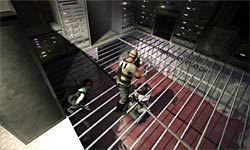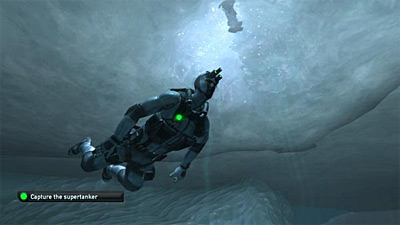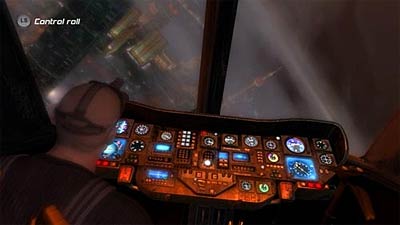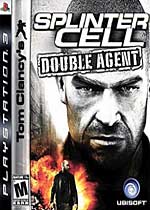The dark prince of stealth returns
There aren’t many gamers that don’t know the name of Sam Fisher. As the more realistic alternative to Solid Snake, Sam Fisher has been the dark prince of stealth action games since his debut on Xbox many years ago. While the Splinter Cell games have always been great titles, one of the major complaints of the series has been a lack of a compelling storyline. The latest iteration of the Splinter Cell series, appropriately named Double Agent, finally addresses this issue and gives gamers what can easily be considered the best Splinter Cell adventure yet. Released on Xbox 360 last year, PlayStation 3 owners are finally getting their own version of Sam Fisher on Sony’s console.

Splinter Cell: Double Agent takes covert operative Sam Fisher on one of his most dangerous missions to date. Sam must gain and maintain the trust of John Brown’s army, a very dangerous terrorist organization. As he infiltrates their ranks, he must juggle completing objectives from both the NSA and JBA, and sometimes these orders conflict which is where a lot of the choice comes into play.
The game begins with a training mission wherein Sam loses his cocky and impulsive partner in training. Immediately following the completion of the mission, Sam learns that he has lost his daughter. This sets Fisher into a downward spiral which ends with him taking this dangerous assignment as a double agent within the JBA. While the story is fairly well done, the player doesn’t get to feel the emotional impact as much as expected, as the game begins in earnest with a jail break after Sam has already gained enough trust with a member of the JBA. We don’t get to spend much time in prison or with a depressed Fisher, as when the game starts he’s all business again, albeit a little darker than before.

One excellent addition to the gameplay is that the gamer actually gets to play out the infiltration method. This includes swimming under frozen lakes to reach goals and parachuting. This method really helps to bring the player into the game world, as you don’t feel that you’re just being dumped into mission after mission. Also, Ubisoft replaced the text menu of Sam’s actions with a visual cue, so that now when you want to open a door, you’ll see an icon of a door opening instead of the text box that let you choose how to open the door. There are also no onscreen indicators of Sam’s life a la Fight Night 3, so you must tell how close to death Sam is by a reddening field around the screen. Both of these elements also help make the experience more immersive.
As usual with the Splinter Cell series, the graphics are very well done. Sam animates with lifelike precision. When the camera pulls in too close, however, his facial features are a bit lifeless, but that’s a minor complaint compared to the stunning environments and detailed character models. The camera also does a fairly good job except for a few instances where it comes in too close when Sam attempts certain actions. The PlayStation 3 version, however, does have a noticeable problem with the framerate that wasn’t nearly as pronounced on the Xbox 360, which is odd since the PlayStation 3 version had longer development time.

Splinter Cell also has the obligatory Sixaxis support for lockpicking. Instead of rotating the analog stick, you tilt the controller until you get an onscreen cue, in the form of moving tumblers, that you’re in the correct place. This addition feels tacked on (like most Sixaxis applications) and, fortunately, can be turned off, as it mainly serves as a reminder of what the Sixaxis is missing with no rumble features.
The use of the conflicting objectives adds a new element of choice to the gameplay. Both the NSA and the JBA have different levels of trust that are gained and lost through the completion of objectives. If you are able to complete JBA objectives, you gain trust with their organization. This works fairly well, especially in the missions at the JBA headquarters. During these missions, the NSA tasks Fisher with gaining info and the JBA wants Fisher to prove himself. There are restricted areas that Fisher will have to enter if he wishes to complete NSA objectives, but being caught in these zones by the JBA is a trust penalty. For a number of these, it is possible to please everyone, but sometimes the goals are mutually exclusive and Fisher must choose one or the other. Completing certain objectives gives Sam access to new weaponry and gadgets, while losing too much trust with the JBA gives Sam less access to the headquarters, which makes his NSA objectives more difficult.
